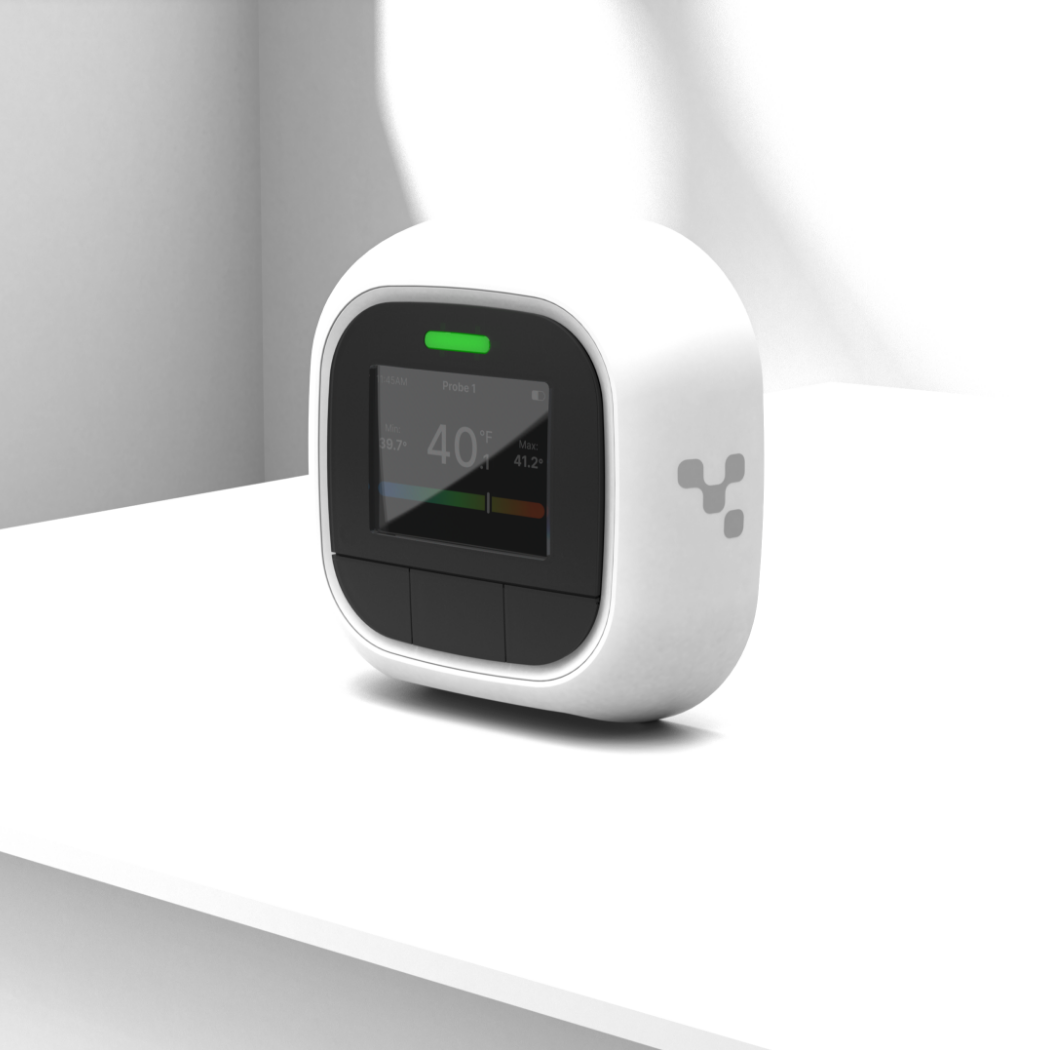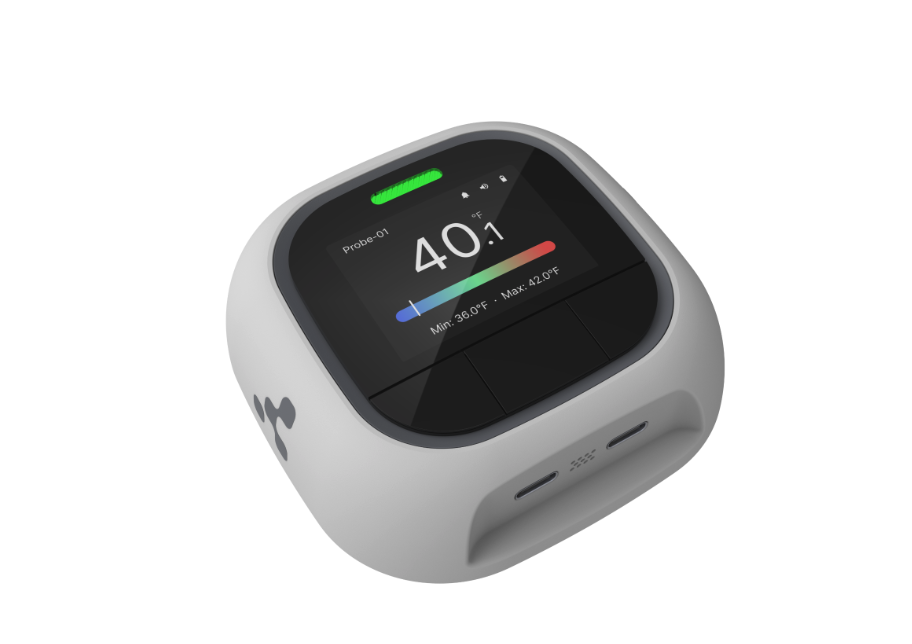

Real-Time Temperature Monitoring Systems for Hospitals
24/7 digital monitoring, instant alerts, and automated reporting keep vaccines, medications, and biologics safe while reducing manual workload, minimizing risk, and improving patient care outcomes.
close
Why Temperature Monitoring is Essential for Hospitals
Maintaining proper storage conditions for temperature-sensitive medications, vaccines, and biologics, is a critical challenge with quality and cost implications. Manual temperature checks pose high risks and are unproductive. Kontakt.io’s Temperature Monitoring solution provides real-time measurements and alerting as well as audit-ready reports, improving staff efficiency and keeping teams informed of spoilage risk.
$1K saved per bed in avoided waste
95% reduction of staff time spent monitoring
5 minutes to produce reporting for audits
Temperature Monitoring Pro
Continuous Monitoring
Our sensors provide nonstop visibility into temperature and humidity, capturing data in both cloud and local logs to ensure nothing is missed even during connectivity gaps.
Real-time Alerting
When conditions fall outside safe thresholds, the system triggers instant alerts to designated personnel ensuring problems are resolved before costly spoilage occurs.
Simplified Audit Reports
Automated reporting eliminates manual paperwork, giving you fast, reliable proof of compliance whenever it’s needed.
NIST and VFC Compliant
Includes 3-year NIST calibration certificates and meets CDC’s Vaccines for Children (VFC) program requirements for safe storage.
Frequently Asked Questions
Join 200k+ Caregivers utilizing our solutions in hundreds of hospitals — from the nation’s largest networks to regional leaders.
Temperature monitoring is critical in pharmacies and vaccine storage to keep medications effective, in laboratories and blood banks to preserve samples, blood, and tissues, in operating rooms and intensive care units to protect patient safety, and in food services to ensure safe nutrition. Extending monitoring across these areas prevents waste, strengthens compliance, and directly supports better clinical outcomes.
Choose a system that delivers proven accuracy with traceable calibration, real-time alerts when conditions drift out of range, secure cloud access for anytime review, audit-ready reporting aligned with healthcare regulations, seamless integration with existing IT and asset systems, and the ability to scale from a single department to the entire hospital network.
IoT sensors continuously measure conditions inside refrigerators, freezers, and rooms and transmit readings wirelessly to a secure cloud platform. Staff view live and historical data in dashboards, receive alerts the moment thresholds are exceeded, and generate audit reports on demand. This automated approach eliminates manual checks, reduces human error, and provides 24/7 visibility.
Hospitals typically choose among manual logs, standalone data loggers, wired monitoring, and wireless IoT systems. Manual and standalone options lack continuous visibility and instant alerting, while wired systems can be costly to install and extend. Modern wireless IoT platforms offer fast deployment, scalability, and real-time monitoring with secure cloud access.
Kontakt.io’s solution is designed for healthcare compliance. Sensors are provided with multi-year, NIST-traceable calibration certificates, and the platform supports adherence to guidelines such as CDC Vaccines for Children (VFC), FDA expectations, and CAP requirements. Automated, audit-ready reporting helps hospitals stay inspection-ready with minimal administrative effort.
Yes. Kontakt.io sensors record data locally during connectivity interruptions and automatically synchronize with the cloud once the connection is restored. This design prevents gaps in records and preserves a complete audit trail even through temporary outages.
When readings go out of range, the platform notifies designated staff via email, SMS, and dashboard alerts. Escalation rules ensure that if the first contact does not respond, the notification moves to the next responsible person, helping teams act quickly to protect temperature-sensitive assets.
Data is protected through secure transmission and storage, role-based access controls, and detailed audit logs. Hospitals retain ownership of their telemetry and reports, and access can be tailored to clinical teams, pharmacy, facilities, and compliance staff according to policy.
Total cost of ownership includes sensors, cloud software, calibration, and minimal maintenance. Savings come from reduced manual labor, fewer spoilage events, faster audits, and improved compliance. Many hospitals see a compelling return as avoided losses and productivity gains accumulate over time.



